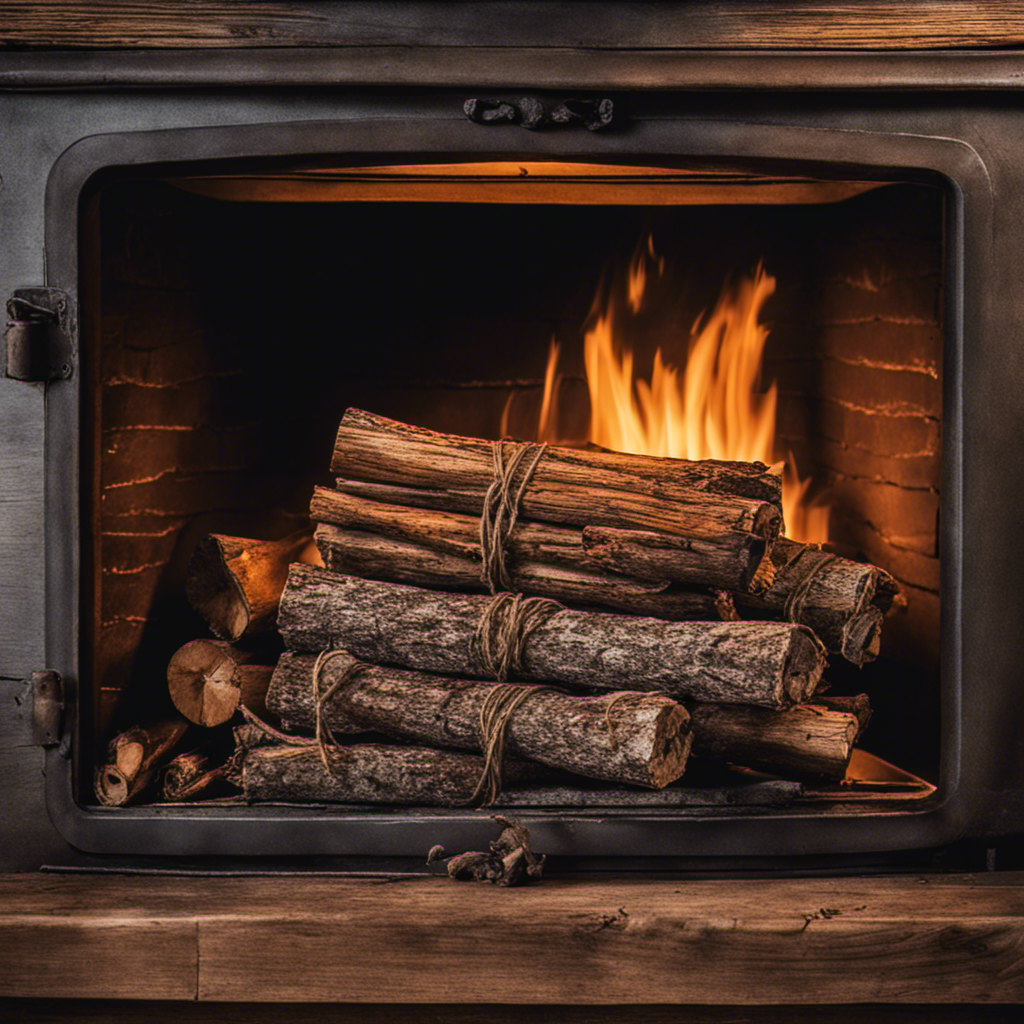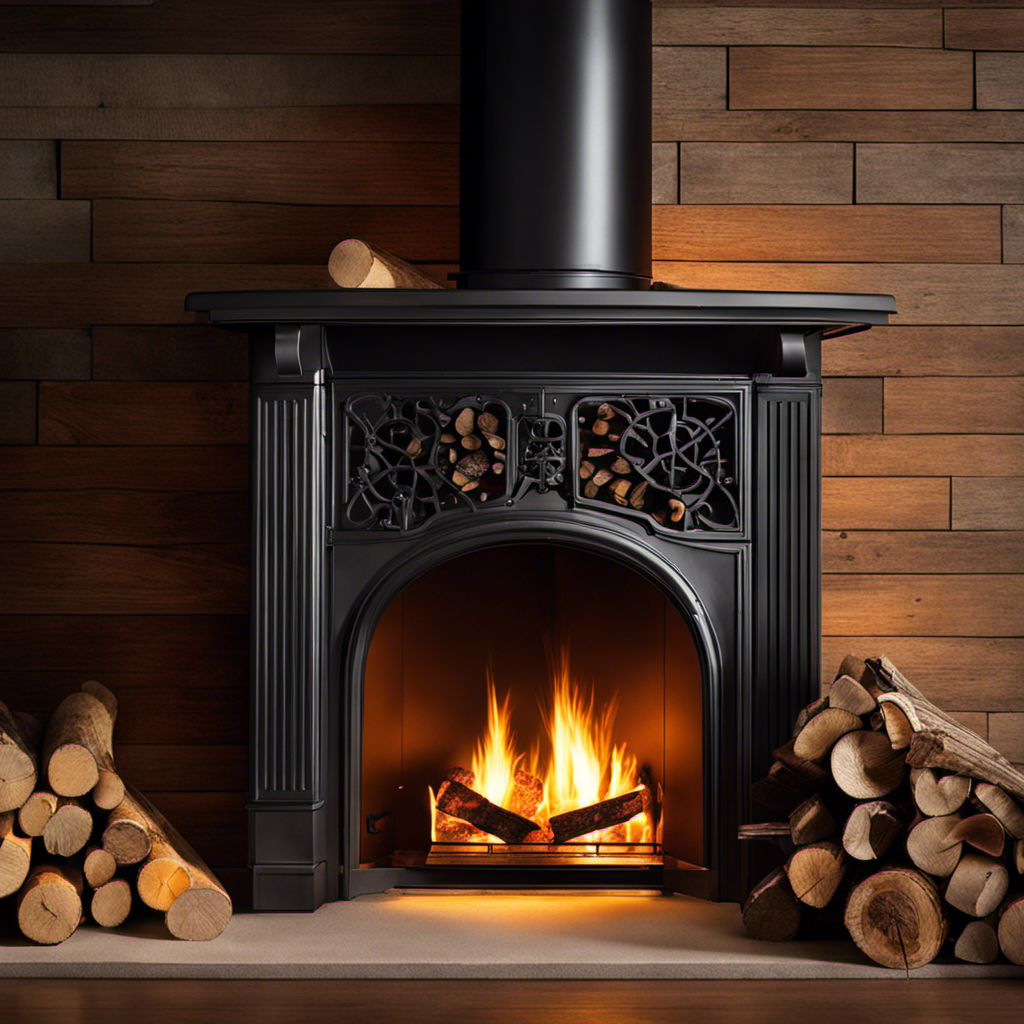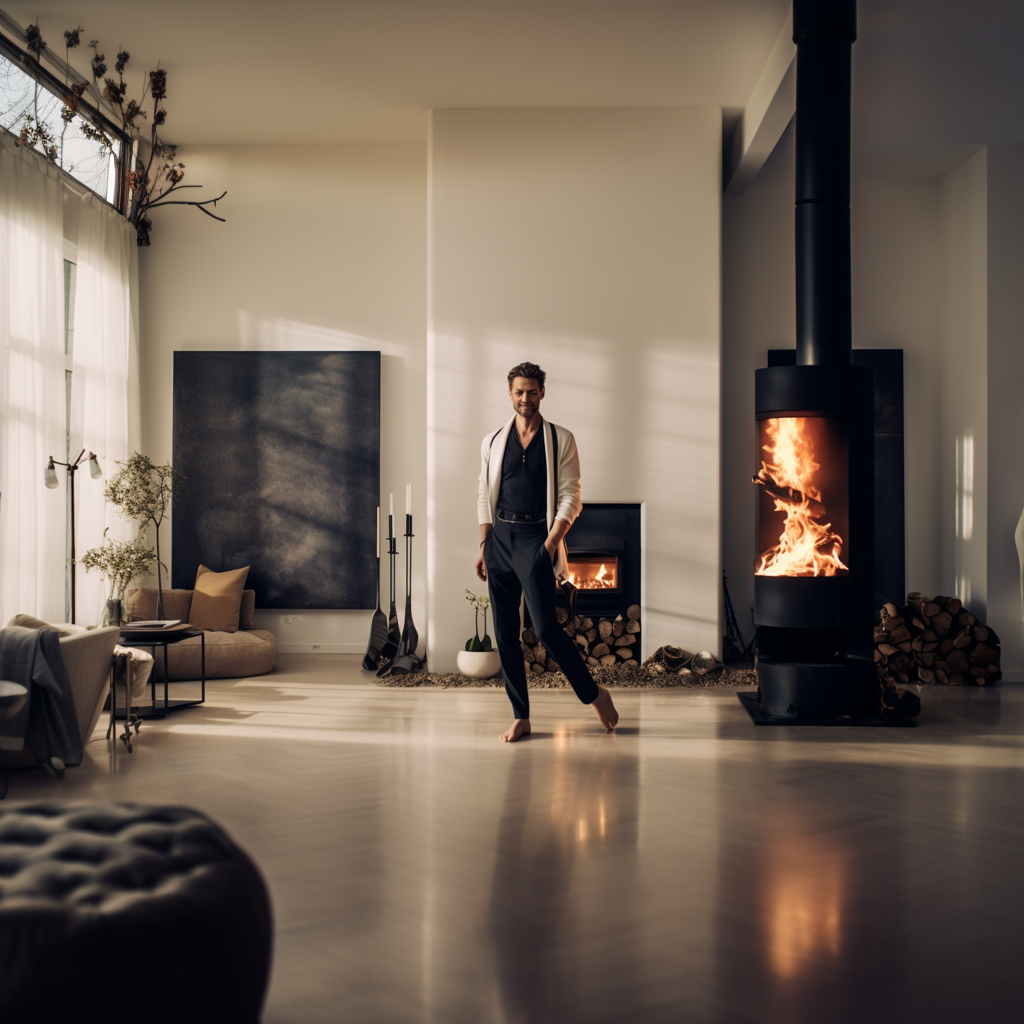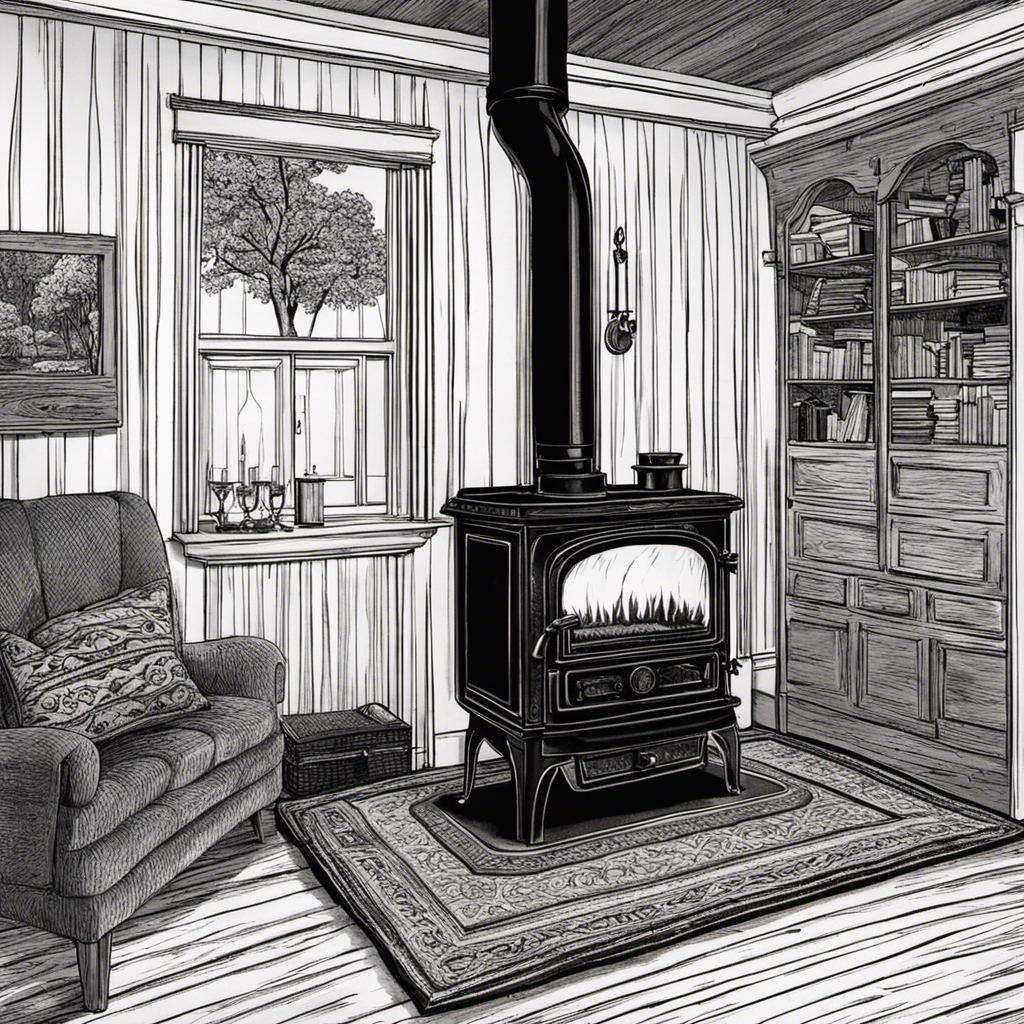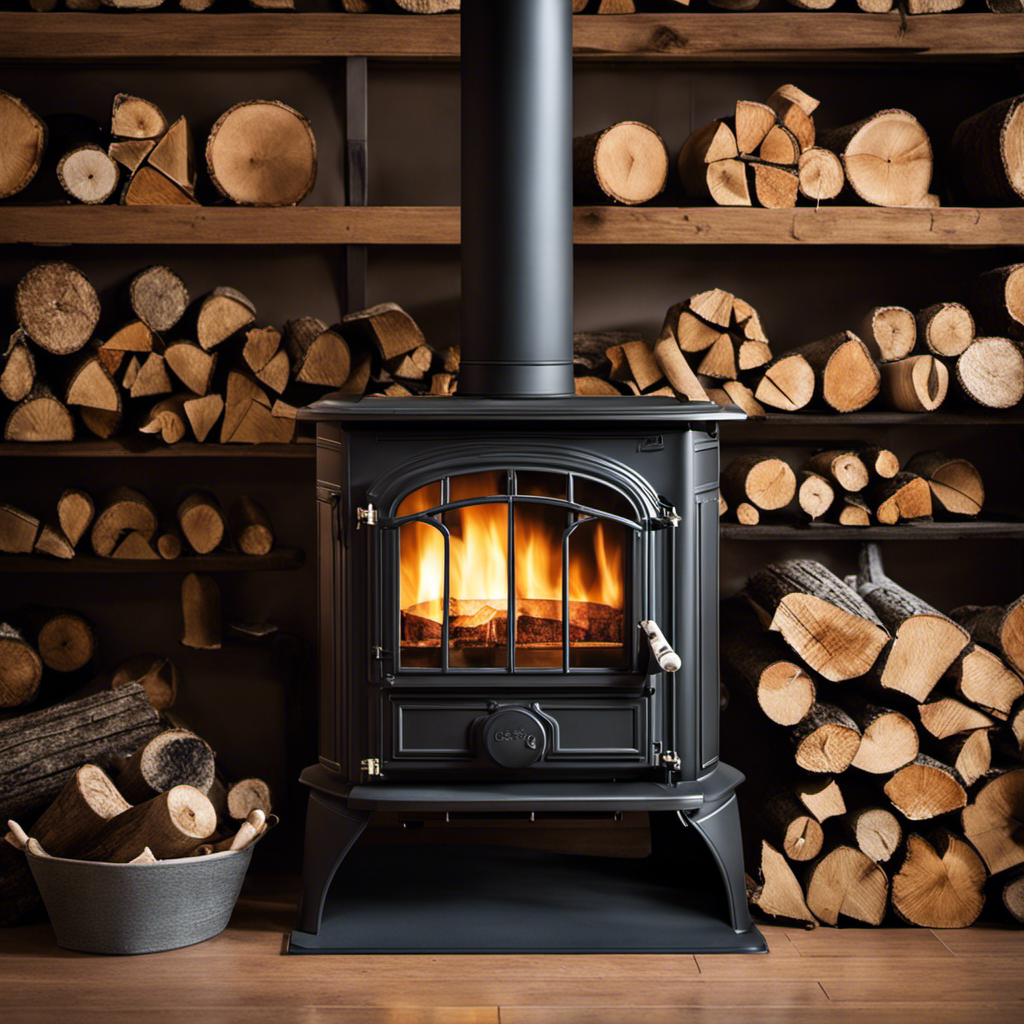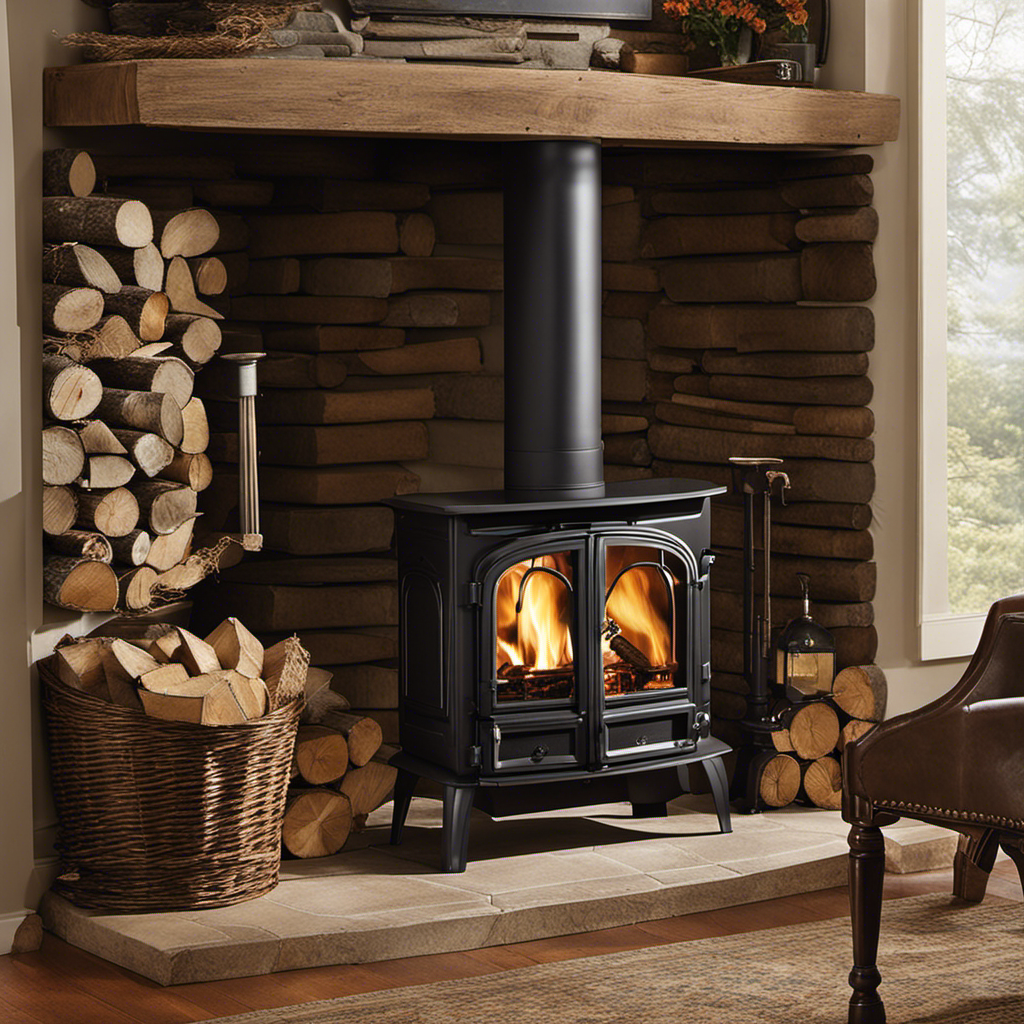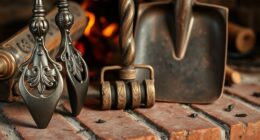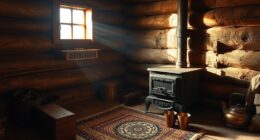Sitting in front of the old wood stove, which speaks volumes with its weathered exterior that exudes feelings of warmth and peace, I am overcome with a feeling of awe and determination.
Today, I will reveal the secrets of starting a fire in this time-honored vessel, passing on the knowledge that has been handed down through generations.
Join me on this journey as we unlock the art and science behind igniting the flames that will bring solace and sustenance to our souls.
Key Takeaways
- Clear out any ashes from the previous fire and sweep away remaining debris from the stove’s interior.
- Choose hardwood over softwood for more heat and longer burn time, and ensure firewood is properly seasoned for easier burning.
- Properly arrange the firewood by stacking hardwoods in a crisscross pattern and softwoods tightly in a vertical position.
- Ensure the wood stove is clean, maintain proper ventilation, and use smaller pieces of kindling or dry newspaper as a starter if having trouble igniting the fire.
Preparing the Wood Stove for a Fire
I’m getting ready to start a fire in the wood stove, so I need to prepare the stove by clearing out any ashes from the previous fire. Cleaning the stove is an important step to ensure proper airflow and efficient burning.
I start by opening the stove door and using a metal ash shovel to carefully scoop out the ashes into a metal bucket. It’s crucial to wear gloves and a mask to protect myself from the fine ash particles.
Once all the ashes are removed, I use a stiff brush to sweep away any remaining debris from the stove’s interior. This helps maintain good airflow and prevents any blockages that could hinder the fire’s performance.
With the stove cleaned and ready, it’s time to move on to gathering the right firewood.
Gathering the Right Firewood
What types of firewood should I be gathering for the wood stove?
When it comes to choosing the right firewood for your wood stove, there are a few key factors to consider.
First, you want to make sure you’re using hardwood instead of softwood. Hardwoods like oak, maple, and ash produce more heat and burn longer, making them ideal for heating purposes. Softwoods, on the other hand, like pine and spruce, burn faster and produce less heat.
Secondly, it’s important to ensure that the firewood is properly seasoned. This means that it has been dried for at least six months to a year, reducing its moisture content and making it easier to burn. Properly seasoned firewood also produces less smoke and creosote buildup in your chimney.
Lastly, storing firewood properly is crucial. It should be kept off the ground, in a well-ventilated area, and protected from rain and snow.
Arranging the Firewood Properly
I’ve stacked the firewood neatly, but now I need to arrange it properly to ensure good airflow. Properly arranging firewood is crucial for wood stove safety and optimal performance. To achieve this, I consider the type of firewood and its moisture content.
| Type of Firewood | Moisture Content | Ideal Arrangement |
|---|---|---|
| Hardwoods (oak, maple) | Less than 20% | Stacked in a crisscross pattern for maximum airflow |
| Softwoods (pine, fir) | Less than 20% | Stacked tightly in a vertical position to allow for better combustion |
Hardwoods, such as oak and maple, have a higher density and burn longer with more heat output. They should be arranged in a crisscross pattern, allowing for good airflow between the logs. Softwoods, like pine and fir, have a lower density and burn quickly. They should be stacked tightly in a vertical position to ensure efficient combustion.
Regardless of the type of firewood, it is important to keep the wood stove safe. Avoid overloading the stove, as this can lead to overheating and potentially cause a fire. Regularly clean the stove and chimney to prevent creosote buildup, which can also be a fire hazard. By properly arranging and maintaining your firewood, you can enjoy a safe and efficient wood stove experience.
Igniting the Fire: Tips and Techniques
After arranging the firewood properly, I can now focus on igniting the fire using tips and techniques like using newspaper and kindling.
When it comes to fire safety, it’s important to follow some basic guidelines. Firstly, ensure that your wood stove is clean and free from any debris. This will prevent any potential hazards and ensure a safe fire.
Next, make sure you have proper ventilation in the room and keep flammable items away from the stove.
Now, let’s talk about troubleshooting. If you’re having trouble getting the fire started, try using smaller pieces of kindling or dry newspaper as a starter. If that doesn’t work, check if your wood is dry enough. Wet wood can be difficult to ignite.
Maintaining and Controlling the Fire
While maintaining and controlling the fire, I need to regularly add more firewood to keep it burning. Here are some key steps to help maintain the temperature and troubleshoot smoke in a wood stove:
-
Monitor the temperature: Use a thermometer to keep track of the temperature inside the stove. Adjust the airflow to maintain the desired temperature range.
-
Properly stack firewood: Arrange the firewood in a way that allows for adequate airflow. Use smaller pieces at the bottom and larger ones on top to promote better combustion.
-
Clean the chimney: Regularly clean the chimney to prevent the buildup of creosote, which can lead to poor draft and excessive smoke. A clean chimney ensures optimal performance.
By following these steps, you can maintain the temperature in your wood stove and troubleshoot any smoke-related issues that may arise.
Remember to always prioritize safety and consult a professional if needed.
Frequently Asked Questions
How Often Should I Clean My Wood Stove?
I clean my wood stove about once a month to ensure optimal performance. The best time to clean is when the stove is cool. Regular cleaning helps prevent creosote buildup and ensures safe and efficient operation.
Can I Use Softwood as Firewood in an Old Wood Stove?
Yes, you can use softwood as firewood in an old wood stove. Softwood burns faster and produces more creosote, so it’s important to clean the stove more often. Consider using alternative fire starters for easier ignition.
Are There Any Safety Precautions I Should Take When Starting a Fire in an Old Wood Stove?
When starting a fire in an old wood stove, it’s important to prioritize fire safety. Ensure proper ventilation to prevent smoke buildup, and take precautions like keeping a fire extinguisher nearby and using the appropriate firewood.
Can I Use Newspaper as Kindling for the Fire?
Yes, you can use newspaper as kindling for the fire in an old wood stove. However, if you’re looking for alternatives, you can also use dry twigs, small branches, or commercial fire starters.
How Long Does It Usually Take for the Wood Stove to Reach the Desired Temperature?
It usually takes about 30 minutes for the wood stove to reach the desired temperature. This can vary depending on factors like the size of the stove, the type of wood used, and the ventilation system.
Conclusion
In conclusion, by following these steps, you can successfully start a fire in an old wood stove.
- Prepare the stove
- Gather the right firewood
- Arrange the firewood properly
- Use effective ignition techniques
Once the fire is lit, maintain and control it for a warm and cozy experience.
With careful attention and adherence to these instructions, you’ll be able to enjoy the comforting heat and ambiance of your old wood stove.
Logan’s affair with adventure began in childhood. He hailed from a small town where vast forests bordered one side and endless shores stretched on the other. His days were spent exploring uncharted woods, climbing tall trees, or listening to the tales of old sailors. This early immersion in a world brimming with stories and mysteries became the foundation of his passion for writing.

